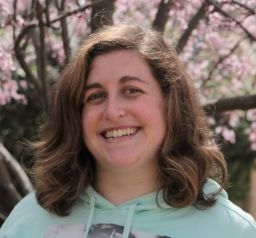Editor’s Note: Ilanit Chernick, (@LanC_02) a former conflict and crime reporter in South Africa, is a Jerusalem-based journalist who covers topics including the Israeli-Palestinian conflict, anti-Semitism, technology and health. The views expressed here are her own. Read more opinion at CNN.
The tragedy struck in the early hours of Friday morning at northern Israel’s holy site of Mount Meron. What should have been a joyous celebration instead left 45 people dead, some 150 injured and a nation that spent Sunday as a national day of mourning.

Some 100,000 people had gathered to celebrate the Jewish holiday of Lag B’Omer, a holiday I traditionally refer to as ‘Bonfire Night.’ The holiday isn’t easy to categorize. It’s a spiritual one that is also celebrated in non-religious communities across Israel and the Jewish world with bonfires, music, dancing, singing and the traditional pilgrimage to Mount Meron, outside the city of Safed, where Rabbi Shimon Bar Yochai is buried.
Rabbi Shimon, a revered rabbinical and spiritual authority who lived in Israel during the second century during the destruction of the Second Temple by Israel’s Roman occupiers, is also regarded as the father of Kabbalism or Jewish mysticism. Custom says that anyone who prays at Rabbi Shimon’s grave, especially on Lag B’Omer, will have their prayers answered.
But this year’s traditional pilgrimage to his grave ended in the catastrophe of a deadly stampede as thousands were exiting the site. How this happened will be the subject of an ongoing investigation over the coming days and weeks. And as Israel mourns this unimaginable loss – one of the worst peacetime tragedies in the country’s history – there is a collective grief and sorrow uniting all Jews from the secular and traditional to the modern and ultra-Orthodox, Sephardic and Ashkenazi.
I don’t have words to describe the pain reverberating throughout the country and the Jewish world as a whole. On Saturday, the Jewish day of Sabbath, it was rare not to hear people speaking about what happened or to find out that someone you were sharing a meal with knew either a victim or a survivor of this terrible night. Like many others, I spent much of Shabbat in shock and tears – sorrow that intensified as video emerged showing images of paramedics performing CPR on multiple victims in the middle of the crowded walkway area while the injured cried and yelled for help.
The grief was compounded by the fact that it happened on Lag B’Omer, the 33rd day of the Omer period that falls between Passover and the festival of Shavuot and commemorates the horrific plague that took the lives of some 24,000 students of the Jewish sage, Rabbi Akiva. Rabbi Shimon Bar Yochai is said to be one of only five students who survived that mysterious plague, making his contribution to the continuation of Jewish study and his place among the sages especially significant.
It is believed that before Rabbi Shimon died on Lag B’Omer, he called on his disciples to rejoice instead of mourn when they commemorated him. From a spiritual perspective in Judaism, lighting bonfires at the site of his grave (and anywhere Lag B’Omer is celebrated) is supposed to signify the immense “light” that Rabbi Shimon Bar Yochai left behind in this world.
From a modern-day perspective, Friday’s massive gathering at Meron in a way also symbolized the celebration of Israel’s re-emergence from another devastating plague that has shaken the world – coronavirus. Israel’s successful vaccination campaign has brought a semblance of normality back to the country, which means large gatherings like the pilgrimage to Mount Meron are being permitted once more.
The pandemic hit Israel’s ultra-Orthodox and Hassidic communities especially hard, and it’s many from these communities who gather at Mount Meron to mark this auspicious holiday.
Lag B’Omer, supposed to mark the move from a period of sorrow and mourning to a period of joy, was something that this year in particular many related to on a personal level. Until the Omer period ends on the day of the holiday, it is customary to observe signs of mourning for the lives lost. For the observant, this ban on activities includes listening to music, cutting hair or shaving, hosting weddings, parties or any event that could lead to dancing.
Now Friday’s Lag B’Omer – and those in the future – will always have an element of grief and sadness tainting the immense joy that is supposed to come with the holiday.
A video that appeared just minutes before the Meron tragedy showed thousands dancing in unison near Rabbi Shimon’s grave. They sang about making the world a better place and stated their belief in God’s ways, chanting the words, Ani ma’amin b’emuna sheleima, which mean, “I believe with complete faith.”
It was an eerie and foreshadowing moment that will now forever be etched in our collective memory.


